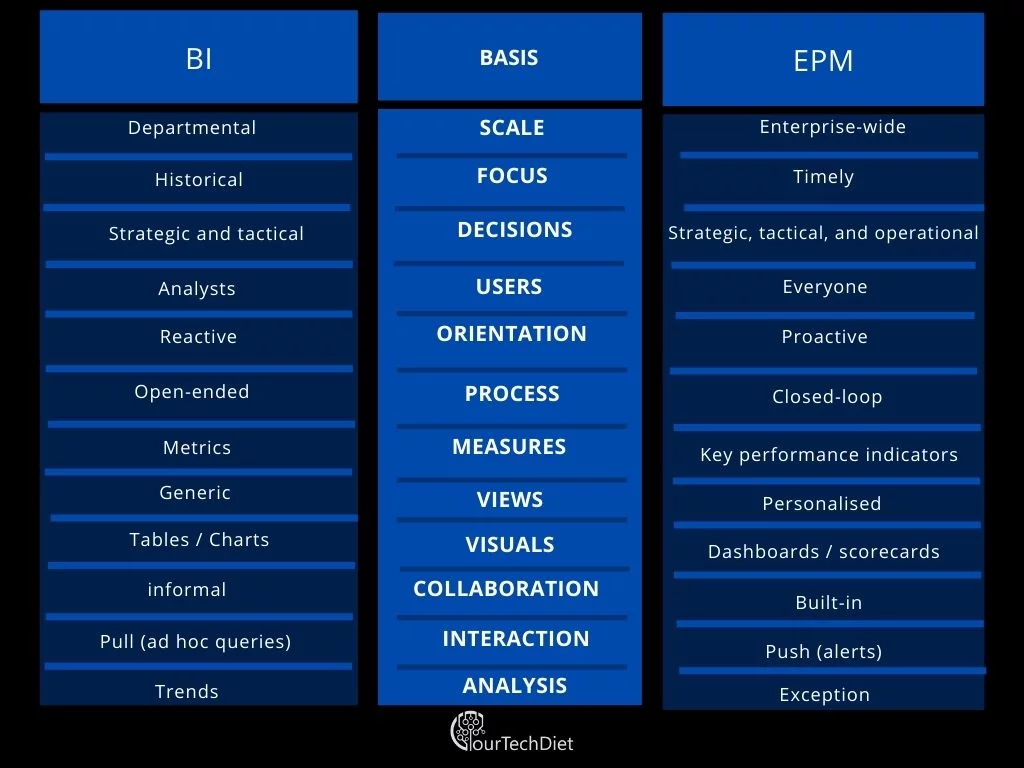At their core, EPM vs. BI have the same purpose of improving business processes.
Essentially BI comes before EPM and forms its basis.
That’s because BI deals with techniques & tools to transform raw data into meaningful information and EPM takes into account this information regarding various resources to evaluate various resources within the enterprise.
EPM vs. BI: Let’s delve into, what is Business Intelligence?
Business Intelligence is basically a combination of all the strategies and technologies used to analyze data and make informed business decisions with the help of that.
The outcome of a BI activity will influence all the operational and strategic decisions within an organization.
It uses all sorts of data, whether structured or unstructured, to provide meaningful information.
BI tools help present meaningful information, usually in the form of charts, graphs, maps, easy-to-access dashboards, and elaborate summaries.
Step 1: Raw data is ingested from various databases which might not be even directly related.
Step 2: All this data is cleaned and transformed into a warehouse of data.
Step 3: Now all this structured information can be easily accessed by a user.
- Power BI
- Oracle Analytics Cloud
- MicroStrategy
- Spotfire
- SAS Visual Analytics
EPM vs. BI: Now, let’s understand, what is Enterprise Performance Management?
Enterprise performance management is a process that evaluates and manages the performance of an enterprise in order to reach its optimal levels.
Key performance indicators which are usually looked out for in this process include:
- Sales, overhead, and operating costs.
- Return on Investment.
CPM (Corporate Performance Management) was considered to be a synonym to EPM earlier but Gartner later scratched that concept altogether.
Step 1: An enterprise-wide plan needs to be rolled out.
Step 2: Mapping out the flow of different processes within the organization, identifying resource utilization, and monitoring the output.
Step 3: Since, you have a blueprint of the functioning of the entire organization, identifying opportunities, and improving upon the processes becomes easier.
Step 4: Developing a dashboard to keep a track of your KPIs.
Step 5: Then you need to implement a change in the management depending upon the outcome of the above-mentioned process.
Step 6: Lastly, monitor how the changes are coming along and if they need further refinement.
- Oracle
- SAP
- IBM
- Anaplan
- Workday
Most EPM platforms do include BI functionality within them. This includes different reporting tools, dashboards, and documentation tools.
EPM vs. BI: Tabular Comparison
Table referred from Slideshare.
Read More:


